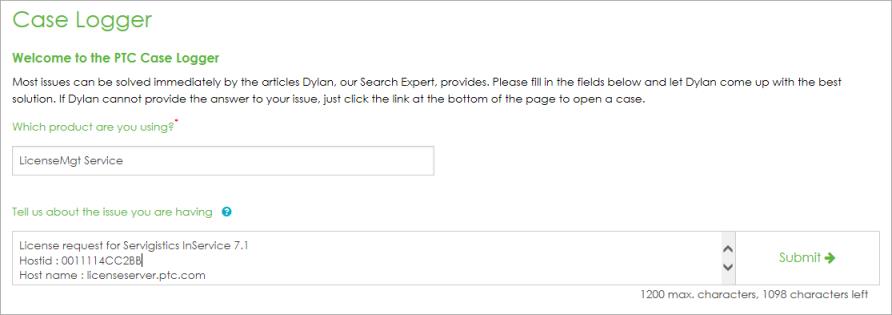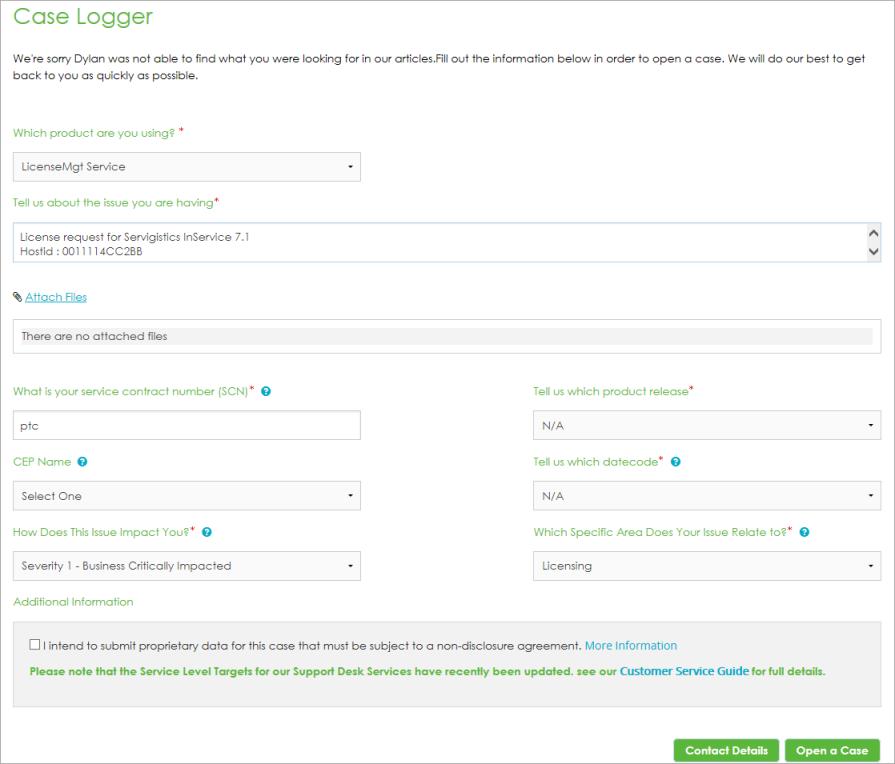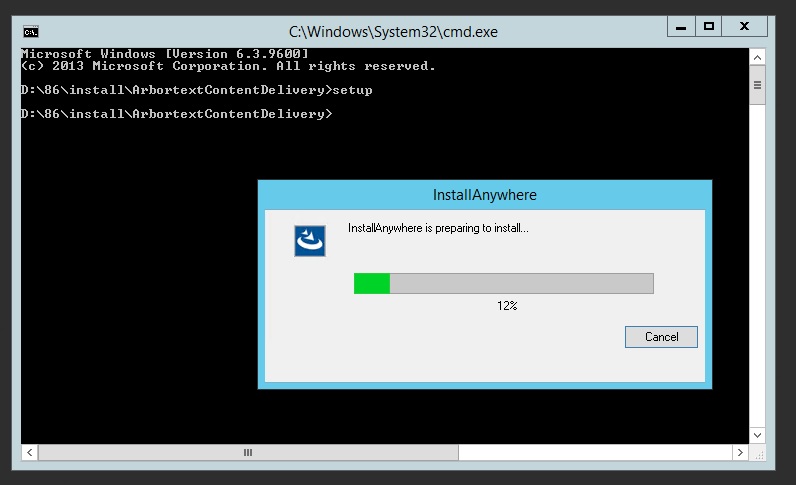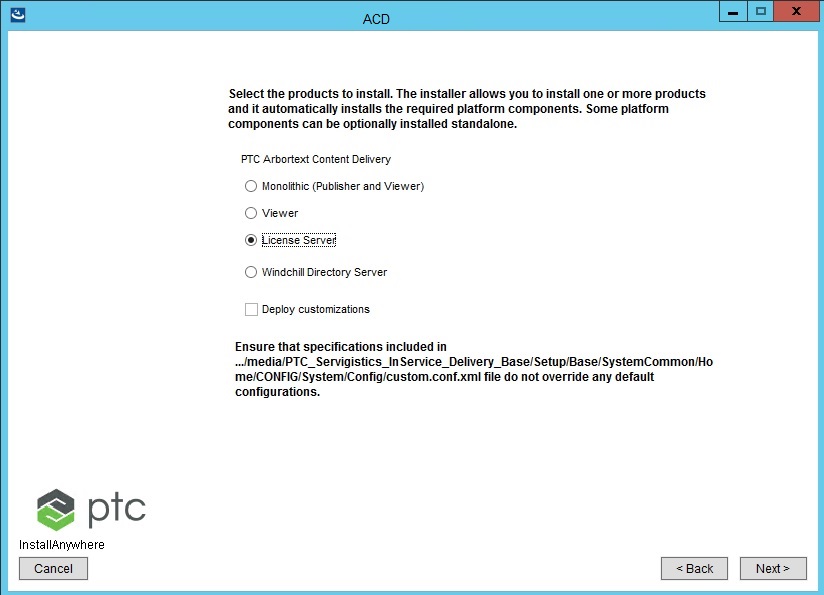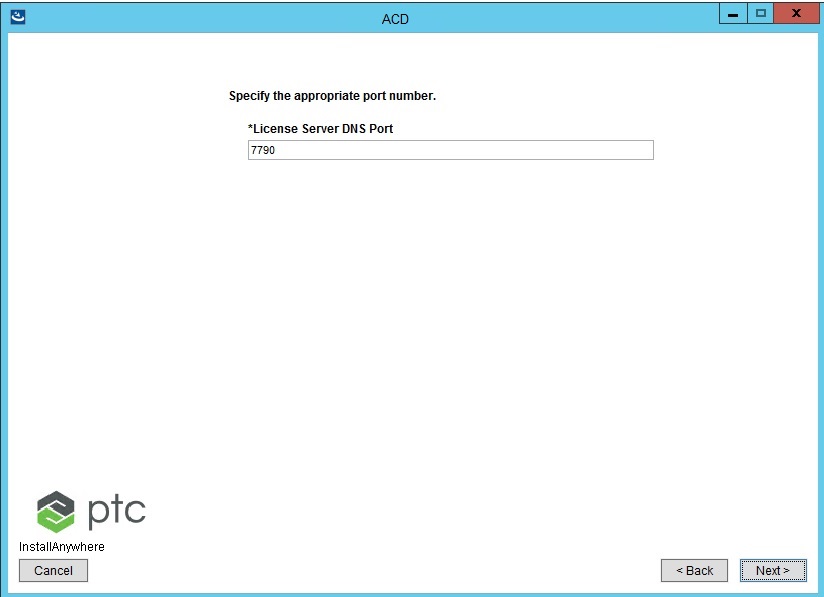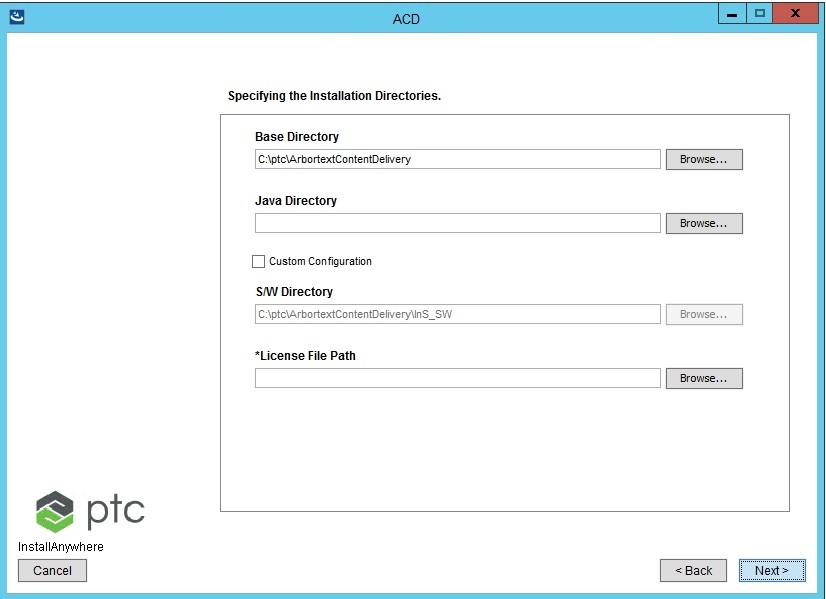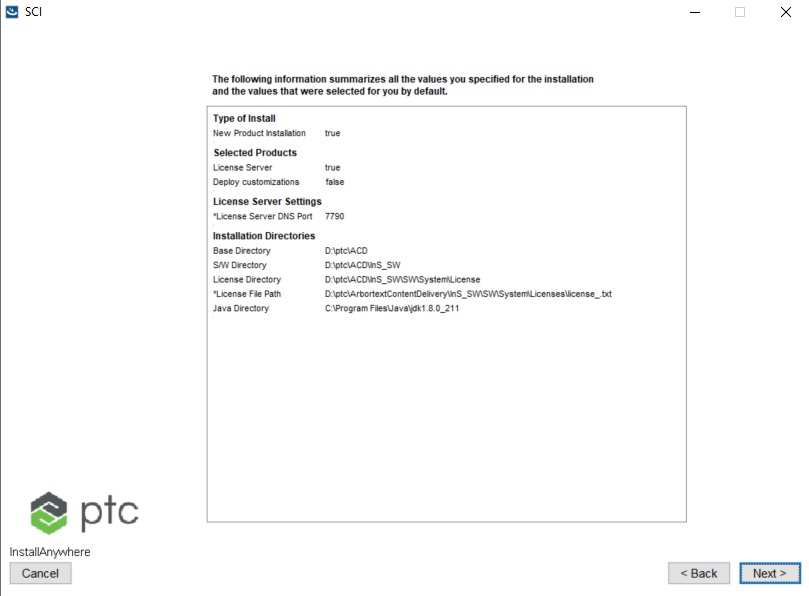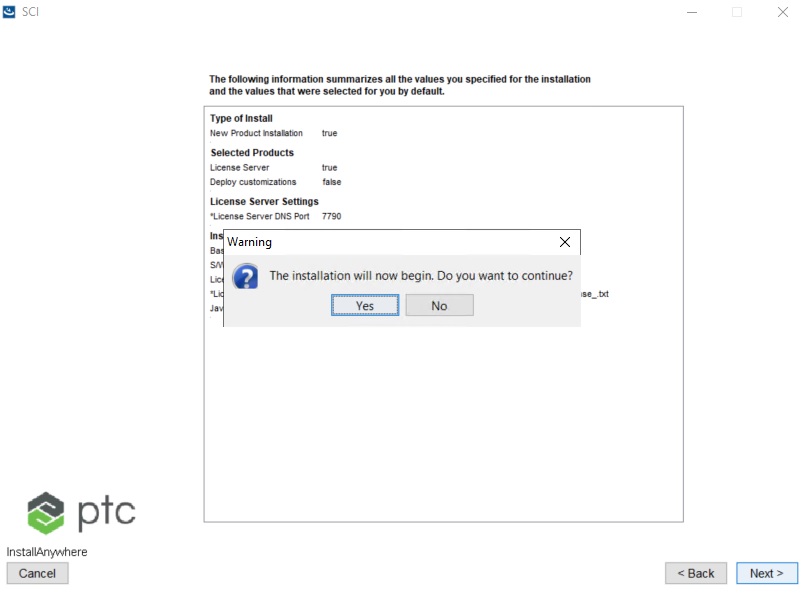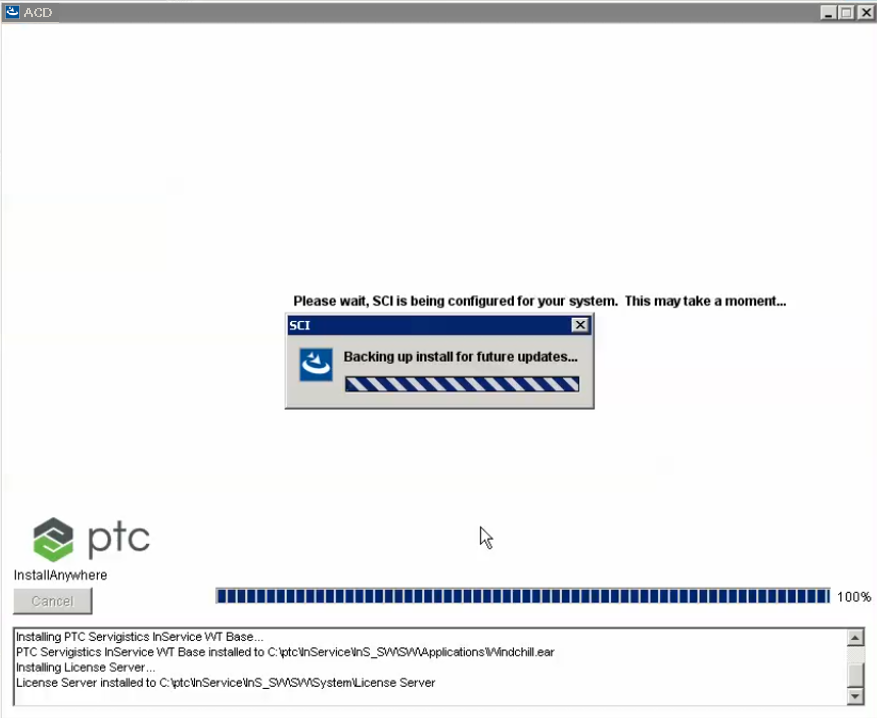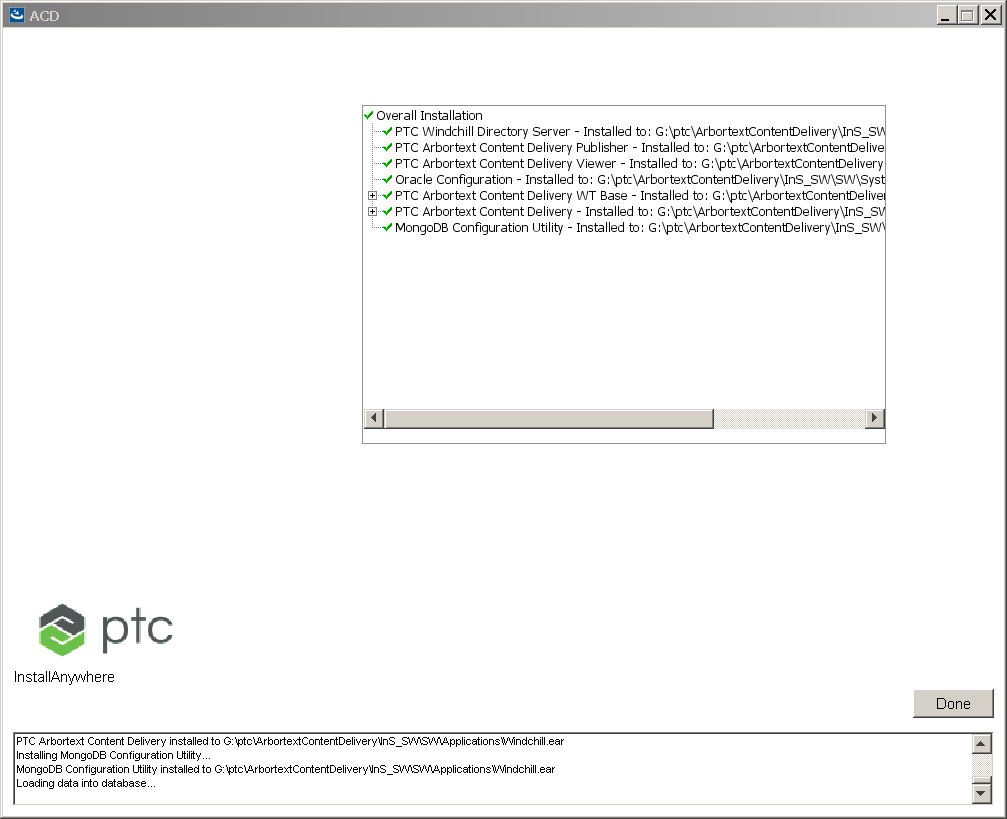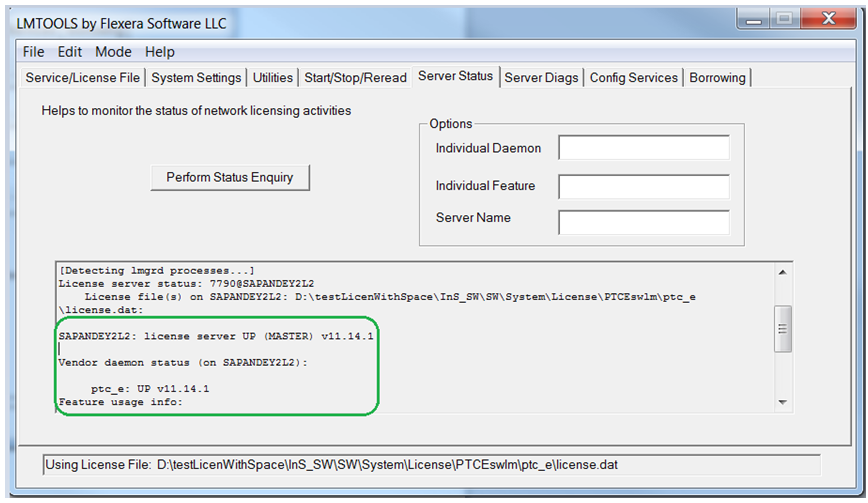Installing a Stand Alone License Server
PTC supports Flexera Software’s FlexNet Publisher as its licensing provider. PTC currently supports the FlexNet Publisher License Server using both the license manager Imgrd and Imadmin.
Provide License Server Information to PTC
You need to provide the license server host ID and server name to the PTC License group.
1. Retrieve the License Server host ID (MAC address).
◦ On Windows: Run the ipconfig /all command to get the MAC address that will be used as host ID.
◦ On Linux: For obtaining host ID, perform the following steps:
1. Open an xterm window.
2. At the command prompt, type in /sbin/ifconfig eth0 and press Return. The host ID is the 12-digit number after HWaddr as shown in the following figure.
| For newer versions of Linux distributions, consistent network device naming has been deployed. This means that the Ethernet adapter can have a different name than eth0. Run the command without parameters to get all adapters on your machine. Select the one for the Ethernet card. For detailed platform-specific information on obtaining FlexNet HostIDs, refer the following table. Hardware Platform | Host ID | Command | Example | Windows | Ethernet address | ipconfig /all | 0011114CC2BB (Physical address, for eaxmple, 00-11-11-4C-C2-BB, remove dashes). See Also | Linux | Ethernet address | /sbin/ifconfig eth0 | 00400516E525 (Remove colons from HWaddr 00:40:05:16:E5:25) |
|
2. To contact PTC’s license group, perform these steps:
b. Click Manage Licenses. The License Management page opens.
c. Click Case Logger.
d. On the Case Logger page, in the Which product are you using? text box, enter LicenseMgt Service .
e. In the Tell us about the issue you are having text box, enter the PTC Arbortext Content Delivery Version, Host name, and Host id as shown in the following image and the click Submit.
f. Click Continue.
g. On the next page, fill out the required information as shown in the following image. In the Which Specific Area Does Your Issue Relate To? list, select Licensing and then click Open a Case.
Prerequisites for License Server Installation
• For Windows
◦ Ensure that you do not have PTC_E License Manager on your local services list.
◦ Run the license server installer as an administrator.
• For Linux
◦ Run the license server installer as a non-root user.
◦ Follow these steps to ensure that the /var/tmp directory has read, write, and execute permissions for user, group, and others:
1. Run the following command from the Linux terminal to check permissions on the /var/tmp directory:
$ls -ld /var/tmp
drwxrwxrwx. 7 root root 4096 Dec 13 03:30 /var/tmp
2. Run the following command from the Linux terminal to provide permissions if the /var/tmp directory doesn’t have read, write, and execute permissions for user, group, and others. You require sudo or root rights to run the command.
$sudo chmod 777 /var/tmp
◦ Run the following command from the Linux terminal to check whether the shared library for the LSB loader or linker is present on your system:
$ls -al /lib64/ | grep ld-lsb-x86-64.so
| If the command doesn’t return any output, the shared library is not present. |
If the shared library is not present, follow these steps to add the shared library to your system:
1. Run the following command from the Linux terminal to check the version of the Linux dynamic link library (DLL):
$ls -al /lib64/ | grep ld-linux
For example,
lrwxrwxrwx. 1 root root 10 Dec 18 14:51 ld-linux-x86-64.so.2 -> ld-2.17.so
2. Run the following command from the Linux terminal to add the shared library to your system:
$sudo ln -s /lib64/<linux_dll_version> /lib64/ld-lsb-x86-64.so.3
Where <linux_dll_version> is the version of Linux DLL (ld-2.17.so in the above example) you obtained in the step 1.For example,
$sudo ln -s /lib64/ld-2.17.so /lib64/ld-lsb-x86-64.so.3
| Alternatively, you can install the redhat-lsb library. Run the following command on Linux terminal to install the redhat-lsb library. For more information about installing the redhat-lsb library, see the Red Hat documentation. $yum -y install redhat-lsb |
Setting up a License Server
You can set up only the License Server by selecting the License Server option from the components selection panel. After you select this option, provide the following information.
Field | Description |
License Server Port | Server port where the License Server must be set up. Default value is 7790. |
Base Directory | Default installation directory for License Server. |
InS_SW Path | Drive and folder location, where the InS_SW must be installed. License directory is created automatically under this folder in the following path for both Windows and Linux: ...\\<InS_Home>\InS_SW\SW\System |
License File Path | Path for the Flexera License Server file that is provided by the PTC License group (following the subscription license process). Files with only .dat and .txt extensions are valid. This is a mandatory field. |
License Server Installation
Set up a license server on your local environment.
• For Windows
1. To run the setup as an administrator, from the command prompt run the following command to start the installation:
setup
This opens the PTC Arbortext Content Delivery user interface.
2. Select the License Server radio button and click Next.
3. Enter DNS port number, for example, 7790. Click Next.
4. Select the license file by browsing to a valid licence file path and click Next.
| The license directory displayed in the above summary screen is where the license server gets installed. This is referred to as <License_Installation_Dir> throughout this document. |
When the installation is complete, the following screen is displayed:
• For Linux
For installation on Linux, perform the same setup steps as explained for Windows.
| • The License Server installation fails if it is already installed. • The License Server installation fails if the license file provided by PTC has improper ptc_e path.For example, DAEMON ptc_e "<INS_HOME>\InS_SW\SW\System\License\PTCEswlm\ptc_e\ptc_e.exe" Ensure that the <INS_HOME> is according to your license deployment. |
Starting a License Server
To start a license server,
• For Windows, the License server installer creates a service named PTC_E License Manager which automatically starts when PTC Arbortext Content Delivery is installed.
• For Linux, run the following command:nohup ${license_server_installation_dir}/InS_SW/SW/System/License/PTCEswlm/ptc_e/rcPTCEswlm.sh ${license_server_installation_dir} /InS_SW/SW/System/License &
| By default, a random port is used by the daemon at each license server restart, you can see it in the FlexNet log file (lmgrd) ptc_e using TCP-port 49753. To use a fixed port, it is necessary to define it in the license file as follows: DAEMON ptc_e "C:\Program Files\PTC\FLEXnet AdminLicense Server\ptc_e\ptc_e.exe" port=[port_number] Ex: DAEMON ptc_e "C:\Program Files\PTC\FLEXnet AdminLicense Server\ptc_e\ptc_e.exe" port=61244 |
License Server Monitoring
• For Windows: Open <License_Installation_Dir>\PTCEswlm\bin\lmtools.exe to update the license and restart service or check licence information. Perform these steps to check whether the License Server is up:
1. Open LMTools window from the <License_Installation_Dir>\PTCEswlm\bin folder.
2. Start LMTools.
3. In the Server Status tab, click Perform Status Enquiry. The License Server and the Vendor daemon status displays as “UP”.
• For Linux
1. Go to <License_Installation_Dir>\PTCEswlm\bin.
2. Run the following command:
./lmutil lmstat -a -c ../ptc_e/license.dat
License Server Configuration
During the installation of
PTC Arbortext Content Delivery you will need to provide the host name and port of the local license server provided earlier. See
Specifying the License Server. This section includes instructions on how to configure the host name and port of the local license server if you opted out during the install process.
Updating a License
When a license expires and a new license is provided, register the new license as follows:
1. To edit the new license, modify the path of ptc_e.exe line 2 in the same way as it is in the current license stored at License_Installation_Dir>\ PTCEswlm\ptc_e\license.dat location.
2. Replace the current license file at the above location with the new one.
3. Go to LMTools and navigate to the Start/Stop/Reread tab.
4. Click ReRead License File.


